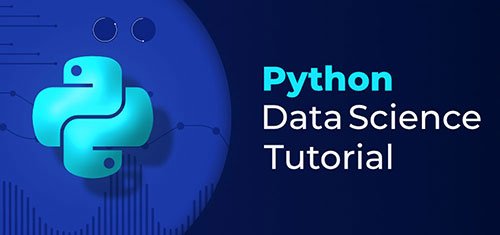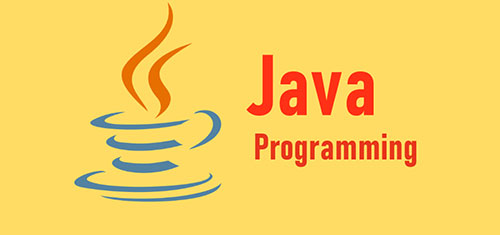What you'll learn:
- Basic syntax and structure of Python programming language.
- Variables, data types, and basic operations in Python.
- Conditional statements (if, else, elif) and loops (for, while).
- Functions and modules for code organization and reusability.
- File handling and input/output operations.
- Exception handling for error management.
Course offers:
- We offer one-on-one or group tutoring sessions in a variety of subjects.
- Experienced tutors who provide personalized instruction and guidance.
- Interactive virtual classrooms with video and audio communication.
- Access to numerous educational resources and study materials.
- Online chat or messaging for communication outside of tutoring sessions.
- Integration with other online learning platforms or tools.
Requirements:
- Reliable internet connection to ensure smooth video streaming and communication.
- You will require an audio- and video-capable computer, laptop, or mobile device.
- Some examples of updated web browsers include Google Chrome, Mozilla Firefox, and Safari.
- Necessary software or applications, such as video conferencing tools or learning management systems.
- A headset or headphones with a microphone for clear audio communication.
Course content:
Duration : 130 hours
- Class #1:Why Python?
- Class #2:Installing Python
- Class #3:Hello World! Program
- Class #4:Running script from command prompt
- Class #5:Running script using Codevidhya’s Code Editor
- Class #6:Variables
- Class #7:Letting user Input
- Class #8:print() function
- Class #9:eval() function
- Class #10:Variables, Expressions and Statements
- Class #11:Values and Datatypes
- Class #12:Python Variables
- Class #13:Variable Names and Keywords
- Class #14:Type Conversion
- Class #15:Statements
- Class #16:Adding Comments to Code
- Class #17:Expressions: Operators and Operands
- Class #18:The Modulus Operator
- Class #19:Order of Operations: Operator Precedence
- Class #20:Conditional Execution - What If?
- Class #21:Boolean Expressions
- Class #22:if Statements
- Class #23:Indentation
- Class #24:else Statements
- Class #25:elif Statements
- Class #26:Logical Operators
- Class #27:Conditional Statements using Logical Operators
- Class #28:Nested Statements
- Class #29:Iterations
- Class #30:‘while’ Loops
- Class #31:Combining loops with Conditional Statements
- Class #32:The ‘break’ Statement
- Class #33:The ‘continue’ Statement
- Class #34:What is an interaction?
- Class #35:The range() function
- Class #36:‘for’ Loops
- Class #37:Creating a simple user defined function
- Class #38:Puzzles!
- Class #39:Lists
- Class #40:A list is a sequence
- Class #41:Creating and accessing lists
- Class #42:List Indexes
- Class #43:IndexError
- Class #44:Traversing a list
- Class #45:Mutable and Immutable Data Types
- Class #46:Lists are Mutable
- Class #47:List Slicing
- Class #48:List Operations
- Class #49:List Methods
- Class #50:Deleting Elements
- Class #51:Nested Lists
- Class #52:Objects and Values
- Class #53:List Aliasing
- Class #54:List v/s Strings
- Class #55:Strings
- Class #56:A string is also a sequence
- Class #57:Creating and accessing Strings
- Class #58:Traversing a String using ‘for’ loop
- Class #60:Strings are Immutable
- Class #61:String Slicing
- Class #62:The ‘in’ Operator
- Class #63:len() function
- Class #64:Searching Strings
- Class #65:Strings comparisons
- Class #66:String Operations
- Class #67:Rock Paper Scissors Game
- Class #68:Functions
- Class #69:Function Calls
- Class #70:Function Call inside a Function Call
- Class #71:Creating New Functions, Function Definitions
- Class #72:Parameters and Arguments
- Class #73:Returning values
- Class #74:Variable Scopes
- Class #75:Modifying Global Variables
- Class #76:Flow of Execution
- Class #77:Why Functions?
- Class #78:‘import’ Statement
- Class #79:Useful functions
- Class #80:Tuples
- Class #81:Creating tuples
- Class #82:Tuples are Immutable
- Class #83:Tuple Assignment
- Class #84:Functions returning Tuples
- Class #85:Sequences of Sequences
- Class #86:Dictionaries
- Class #87:Creating and Accessing Dictionaries
- Class #88:Reverse Lookup
- Class #89:Dictionaries v/s Lists
- Class #90:Key are always of immutable type
- Class #91:Tkinter
- Class #92:Args
- Class #93:Kwargs
- Class #94:Buttons, Entry and setting component options
- Class #95:Radio Buttons, Scales, CheckButtons and more
- Class #96:Layout Manager pack(), place(), and grid()
- Class #97:Miles to Kilometer Convertor Project
- Class #98:Working with canvas widget and add image to Tkinter
- Class #100:Work with Application User Interface(UI)
- Class #101:Add a countdown (Pomodore project)
- Class #102:Setting different timer sessions and Values (Pomodore project)
- Class #103:Adding checkmarks and resetting the application (Pomodore project)
Skills you will acquire:
- Web scraping
- Indexing
- Sets
- Conditional statements
- File handling
- Errors and exceptions

Description:
Python is a high-level, interpreted, and general-purpose programming language. It was created by Guido van Rossum and was first released in 1991. Python emphasizes readability, simplicity, and productivity, making it a popular choice for beginners and experienced developers alike.
$700 $1000 30% off
Book Demo Class











